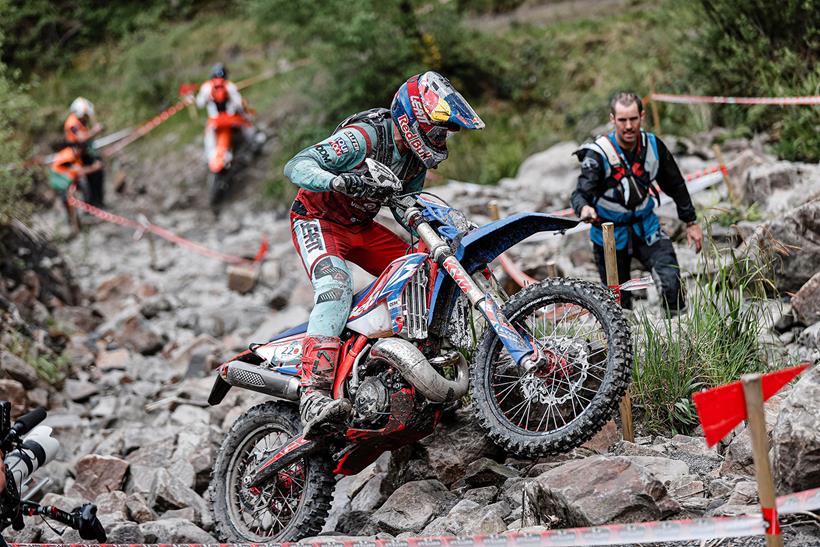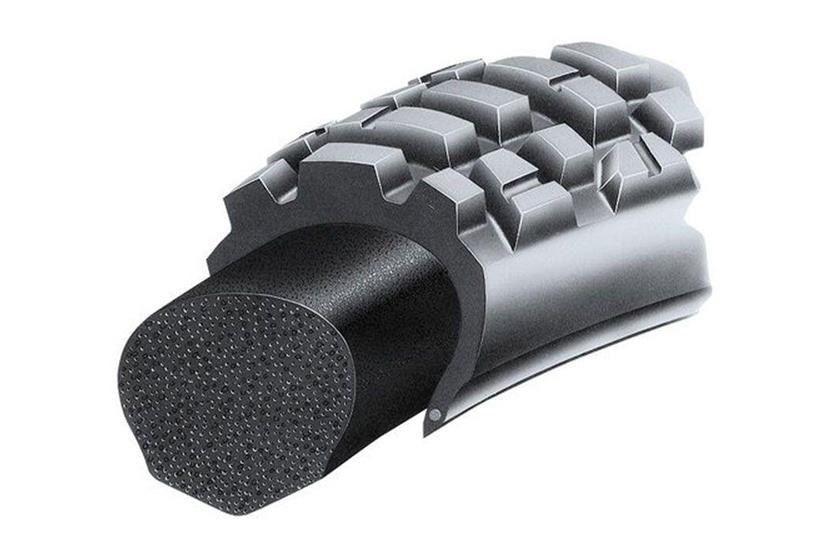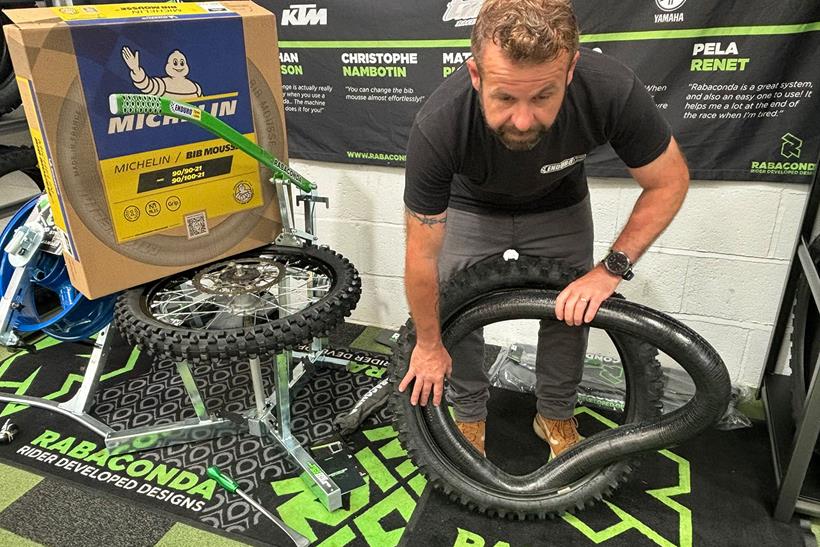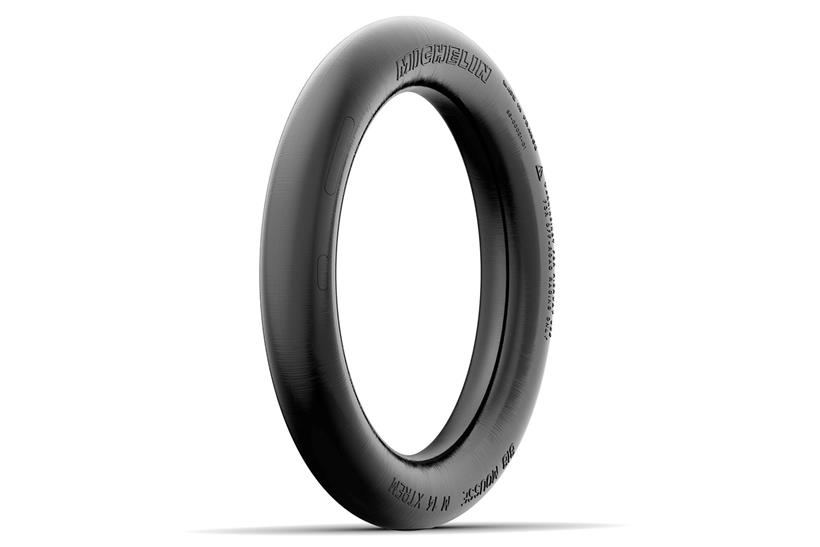What is a mousse and are they legal? | MCN explains the ins and outs of this off-road puncture proof system

Off road racers – include Dakar heroes are well known for using puncture-proof mousses in their tyres, but they’re now becoming more and more popular with everyday off-road enthusiasts. Since their inception almost 40 years ago, mousses have grown hugely in popularity.
Amateur riders are becoming increasingly drawn to their puncture proof appeal. On top of this, mousses now dominate the top levels of off-road motorcycle racing, with Michelin achieving 36 Dakar victories, 22 Enduro world titles and 7 MX world titles on their products.
A puncture is the last thing you want when you are miles into an off-road adventure, or mid-way through a race. Enter the bib mousse (named after Michelin’s mascot, Bibendum), effectively a foam ring that takes the place of an inner tube and provides structural rigidity, as well as impact absorption to a motorcycle tyre. The result – a totally puncture proof riding experience combined with improved grip, no matter what the terrain.

Although now the norm in the niche world of off-road competition, no such system has been pioneered for the road going market. Some manufacturers, such as Italian brand Risemousse, have attempted to create such a product that could be deployed effectively (and legally) on tarmac, but these attempts never really gained much traction.
So what exactly is a mousse?
Not to be confused with the tasty chocolate dessert, it is a “foam infill that takes the place of an inner tube to fill the internal volume of the tyre,” says Paul Daley-Smith, owner of Enduro Tyres (Michelin tyre importer and distributor).
While this may not seem high tech, modern mousses are the product of decades of development. First pioneered for rally-raid events by Michelin in 1983, mousses are now used at the top level of off-road racing the world over.

A modern mousse is constructed using a honeycomb butyl rubber foam structure, with multiple closed-cell pockets filled with nitrogen. Covering this is a smooth, low friction ‘skin’ that is designed to allow movement as the tyre flexes under load.
Once installed, the system totally removes the chance of suffering a puncture – a handy feature to have when blasting across the desert or negotiating a rock strewn enduro course. But that’s not all, and thanks to the ‘dead’ feeling they provide, riders enjoy increased traction too with their wheels less likely to deflect from undulations on the trail.
Feeling the pressure
That’s all well and good, but there are a couple of drawbacks. Friction is the enemy of the mousse and for that reason trouble can occur when the temperatures start to rise.

Daley-Smith told MCN: “The system shouldn’t be used in temperatures above 40 degrees or higher than 80mph.” Doing so can lead to overheating, causing rapid degradation or even failure.
The tyre specialist also stressed the importance of fitting the right mousse to the right tyre. Whilst you’ll generally get away with using an incorrectly sized inner tube, a mousse must be sized specifically for the tyre.
The system also cannot be easily adjusted for feel in the same way a tube can be. Fresh out the box, they will provide an equivalent support of about 13 psi, but this softens with wear as Nitrogen gas escapes. To achieve an even softer feel, some racers will drill their mousses, or run ‘mousse balls’ – which effectively offer the same purpose, but with the advantage of being more tuneable.

Rim locks must also be used – especially on the rear. Where the force of an inner tube constantly presses the tyre bead against the rim, a tyre fitted with a mousse could easily spin on its wheel. They also require lubrication, and most carry a shelf life of 18 months.
Built tough
Whilst they need a degree of care, mousses are nonetheless incredibly tough – exemplified in the 2021 Dakar Rally. During the seventh stage of the event Toby Price gashed his rear tyre, but still managed to finish the remaining 186 miles of the stage just five minutes off the pace of the lead rider. The following day – unable to change his damaged tyre without incurring a 30-minute penalty, Price successfully navigated the 233-mile eighth stage, dropping just one minute and five seconds to Honda’s Jose Ignacio Cornejo.
Keeping it legal
The freedom to ride anywhere and never be stricken by the inconvenience of a puncture holds an incredibly enticing appeal for those who find their kicks in the dirt. But for the UK crowd at least, a mousse holds one major drawback – it isn’t legal for using on the public highway.

Unable to be inflated or deflated, a mousse does not meet the definition of a pneumatic tyre, so says Andrew Dalton of White Dalton Motorcycle Solicitors. If you’re caught using them on a public road by the police, Dalton continued, “[the officer] would then have grounds for impounding the vehicle as, in his opinion, it would be dangerous to take on the road.”
That is of course assuming the attending officer has a tyre pressure gauge handy.









